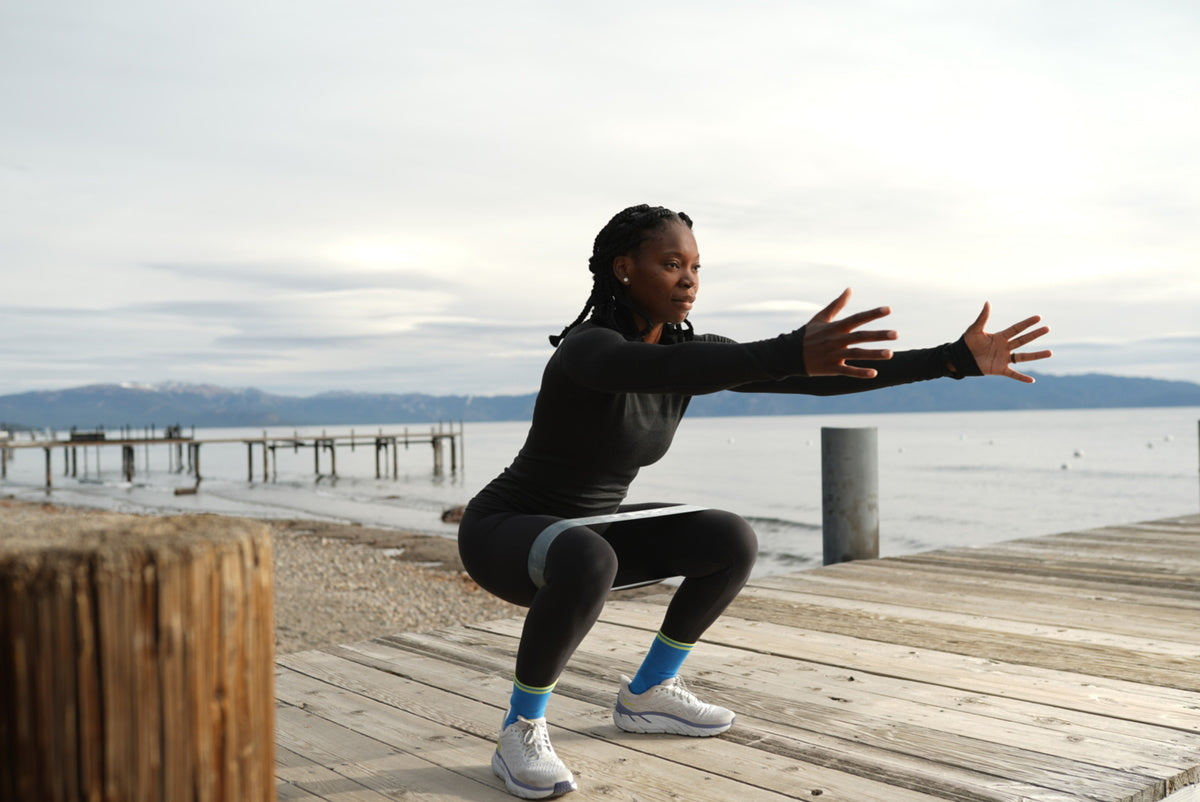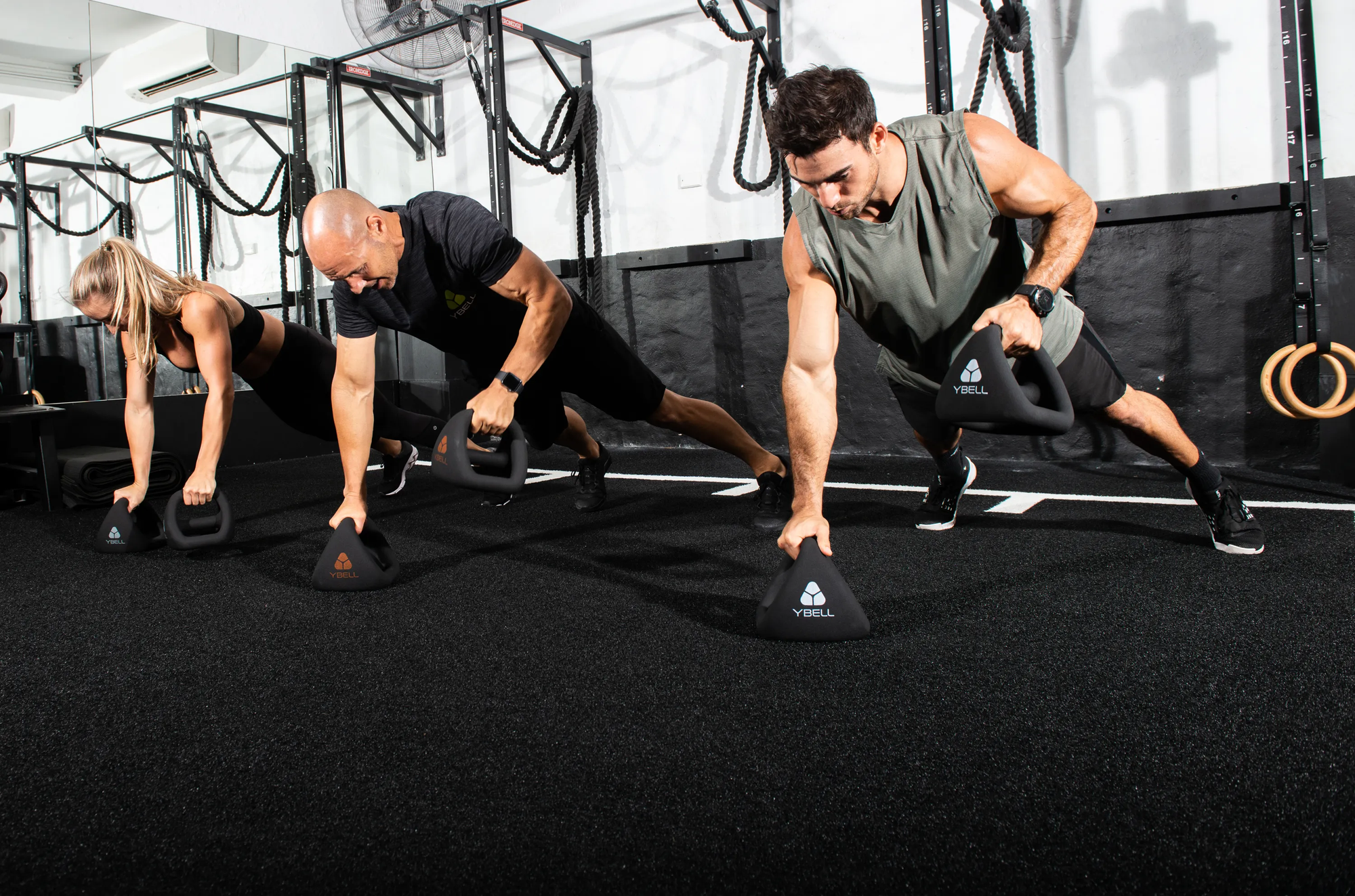We’ve all seen resistance bands in the gym, but are they really worth using?
Whether you’re new to working out or an advanced athlete, the answer is a resounding yes! Resistance bands offer many benefits to your warmups and stretches and can help to increase the intensity of your current workout.
Do Resistance Bands Work for Strength Training?
Resistance training is a crucial element of any exercise plan aimed at boosting muscle power and endurance. Muscle strength is defined as the maximum force a muscle can produce in a single exertion, while muscle endurance refers to the muscle's ability to consistently apply less than maximum force. Both of these components are key to achieving overall fitness.
For the majority of us, distinguishing between muscle power and endurance isn't of particular concern. The reason we engage in strength training is that it provides a myriad of benefits such as simplifying everyday physical tasks, providing a well-defined physique, enhancing athletic prowess, and aiding in weight loss.
Resistance bands can be instrumental in your quest to develop and tone muscles. Though these bands may not contribute to muscle bulk in the same way as weights, they provide an additional challenge to your strength-building exercises. Incorporating resistance bands into your secondary or tertiary strength training circuit can significantly contribute to sustaining muscle endurance.
Types of Resistance Bands
Made of rubber tubing or elastic, resistance bands are a versatile option that come in several styles.
Flat Resistance Bands
Flat resistance bands have a wide, flat structure, making them ideal for looping around your hands. They offer an easy length adjustment mechanism, which allows you to enhance the resistance by shortening the band and reduce it by extending it.
These types of bands are frequently encountered in fitness centers, physiotherapy clinics, sports medicine offices, and workout gear retail outlets. Pilates and yoga studios also use them to provide extra resistance during stretching or mobility exercises. Their adaptability makes them an indispensable piece of equipment for your home-based gym.
Resistance Bands With Handles
Resistance bands with handles are tube bands used for building muscle strength and size. The handles offer a firm grip, allowing for advanced exercises that mimic strength training machines in a gym.
Stackable resistance bands use standard carabiners or S-biners, letting you combine bands to increase or decrease the resistance level as needed. Resistance increases by adding bands while keeping the length the same. Resistance decreases by adding length to the band.
Loop Resistance Bands
Loop resistance bands are thinner and shorter than flat bands, and they form a closed loop.
They’re most often used with exercises that target the leg muscles and glutes, making them great for physical therapy and strengthening movements to heal these areas.
Power and Mobility Resistance Bands
Power and mobility bands are heavy-duty loop bands commonly used in cross-training, high-intensity resistance training, and powerlifting. You can use power and mobility bands for variable resistance to weight training or pull-up assistance for at-home strength training. In sports medicine, mobility bands are used to correct mobility issues.
Benefits of Using Resistance Bands
Let’s consider some of the benefits of adding resistance bands to your weight training.
1. Resistance Bands Add Challenge
Resistance bands offer a unique workout experience compared to free weights and machines because they maintain resistance throughout the whole movement, making it harder to exploit momentum and sidestep the exercise's intensity. They come in a wide range of resistance levels to suit the workout needs of anyone from novices to seasoned athletes. By adjusting the slack on the band—taking in more for a harder workout or letting out some for an easier one—you can swiftly modify the exercise's intensity.
2. Resistance Bands Require More Muscle Recruitment
Because resistance bands are unstable compared to fixed-motion exercises, they require more muscles and stabilizers to execute movements properly. Resistance band exercises also activate the core to maintain balance and overall stability.
3. Resistance Bands Are Effective
While resistance bands might appear simple to utilize, don't let their appearance fool you into thinking they're not potent. Research has indicated that training with these bands can augment muscle power and endurance, and enhance performance in athletic activities.
4. Resistance Bands Offer Variety to Your Workout
Traditional strength equipment limits you to one or just a few exercises. But the opportunities with resistance bands are virtually endless. You can easily create compound movements, such as a squat with an overhead press or a lunge with a row. It’s also easy to simulate recreational activities, like a golf or tennis swing, or functional movements, like opening a door or placing something overhead on a shelf.
Furthermore, you can add more variety and challenge by combining resistance bands with weights, such as doing a DB bicep curl using a YBell and a band together.
5. Resistance Bands Are Safe to Use
Resistance bands don’t require a spotter and are easier on the joints than free weights, so your risk of injury decreases. Plus, you don’t have to load or unload plates or risk dropping a weight on your foot.
6. Resistance Bands Are Convenient
Because resistance bands are inexpensive, lightweight, and portable, you don’t need extra storage space in your home gym. They’re also easily portable, making them the perfect accessory for your at-home YBell workouts!
Your muscles adapt to the demands made on them, so it’s best to vary your workouts and exercise tools over time to stimulate progress. Don’t ditch your free weights or whatever weight training items you use; just find ways to incorporate resistance bands into your routine as well.



